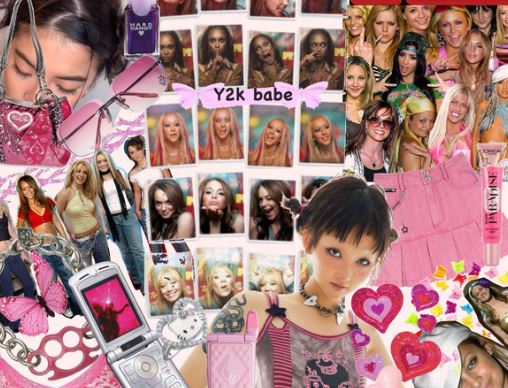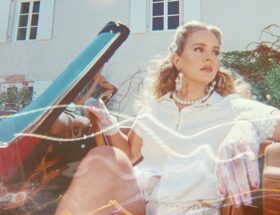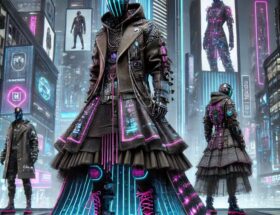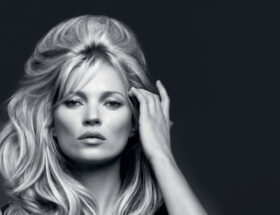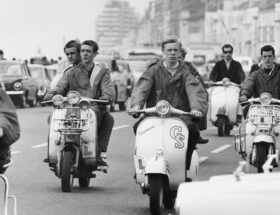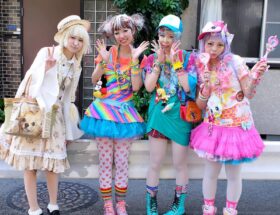The turn of the millennium wasn’t just about dodging the Y2K bug—it was a cultural explosion that birthed a bold, brash fashion aesthetic. Think metallic miniskirts, baby tees, and chunky flip phones as accessories. The Y2K fashion aesthetic, rooted in the late ‘90s and early 2000s, was a heady mix of optimism, tech obsession, and unapologetic excess. Fast forward to 2025, and it’s back with a vengeance, reimagined for a new generation. This article unpacks the origins, hallmarks, and resurgence of Y2K style, blending nostalgia with fresh insights. Let’s dive into the shiny, futuristic world of Y2K fashion.
The Dawn of Y2K Fashion: A New Millennium Vibe
The Y2K aesthetic didn’t appear overnight—it was a slow burn that ignited as the 20th century wound down. The late ‘90s were a time of paradox: the internet was booming, boy bands ruled the airwaves, and fears of a technological apocalypse loomed. Fashion became a mirror for this tension, fusing futuristic fantasies with playful rebellion.
Cultural Catalysts: Tech, Pop, and the Millennium Mindset
The Y2K bug—a feared glitch that threatened to crash computers at midnight on January 1, 2000—sparked a fascination with all things sci-fi. Movies like The Matrix (1999) and Blade Runner (1982, but a lingering influence) fed into a cyberpunk vibe: think PVC trench coats and mirrored sunglasses. Meanwhile, pop culture icons—Britney Spears, Destiny’s Child, NSYNC—pushed a glossy, hyper-feminine counterpart with sparkly crop tops and low-rise jeans.
A 2001 report by the Fashion History Museum noted that apparel sales for “futuristic fabrics” (metallics, synthetics) spiked 18% between 1998 and 2000, reflecting this tech-driven trend. Designers like Alexander McQueen and Jean Paul Gaultier leaned in, blending high fashion with cyber aesthetics.
- Tech obsession: Flip phones and Tamagotchis doubled as style statements.
- Pop power: MTV’s Total Request Live dictated trends, from frosted tips to velour tracksuits.
- Millennium fever: The year 2000 felt like a blank slate—fashion had to match the hype.
Defining the Y2K Aesthetic: Bold, Bright, and Unafraid
Y2K fashion wasn’t subtle—it screamed confidence with a wink. Its hallmarks are instantly recognisable, a cocktail of kitsch and cool that’s as divisive as it is dazzling.
Key Elements: The Look That Launched a Thousand Trends
The Y2K wardrobe was a playground of textures, colours, and silhouettes. Low-rise everything—jeans, skirts, even cargo pants—ruled, often paired with cropped tops that bared midriffs with pride. Metallics and pastels dominated, from silver slip dresses to baby-pink accessories. Accessories were oversized and loud: think butterfly clips, platform flip-flops, and bedazzled phone cases.
Case study: Paris Hilton. The heiress-turned-reality-star was Y2K royalty, strutting in Juicy Couture tracksuits and Von Dutch trucker hats. Her 2001 outfit at a Sean John party—a metallic bikini top, micro-mini, and tinted shades—encapsulated the era’s excess. Fashion historian Valerie Steele, in a Vogue article, called Hilton “a walking billboard for Y2K’s hedonistic optimism.”
- Low-rise revolution: Jeans sat dangerously below the hips, a trend Gap reported sold 40% more units in 2002 than 1997.
- Shiny and sheer: Mesh tops and iridescent fabrics added a space-age sheen.
- Accessory overload: Chokers, charm bracelets, and mini backpacks were non-negotiable.
The Gender Blur: A Unisex Playground
Y2K fashion flirted with fluidity long before it was mainstream. Boy bands wore glossy shirts and frosted tips; girl groups rocked cargo pants and combat boots. Aaliyah’s 2001 video for “Try Again” showcased her in a metallic bra top and leather pants—a look as tough as it was glamorous. This androgyny laid groundwork for today’s gender-neutral fashion wave.
The Fade and Fall: Why Y2K Fashion Fizzled Out
By the mid-2000s, the Y2K aesthetic began to wane. The glitter faded, replaced by boho chic (think UGG boots and peasant skirts) and then skinny-jean minimalism. What happened?
Post-9/11 Sobriety and Cultural Shifts
The September 11, 2001 attacks shifted global mood—and fashion followed. Extravagance felt out of touch; muted tones and practicality crept in. A 2005 WWD survey found that 62% of designers pivoted away from “flashy” trends toward understated elegance. The rise of reality TV also shifted focus from pop stars to “relatable” figures like Lauren Conrad, whose laid-back style eclipsed Y2K’s boldness.
Meanwhile, the tech bubble burst cooled the cyber-fantasy vibe. Flip phones gave way to BlackBerrys, and fashion mirrored this utilitarian turn. By 2007, Y2K was a relic—mocked as tacky by a new generation chasing indie sleaze.
The Y2K Revival: Nostalgia Meets Gen Z
Flash forward to the 2020s, and Y2K is back—bigger, shinier, and TikTok-approved. What’s driving this renaissance, and how does it differ from the original?
Social Media Fuel: TikTok and Instagram Take the Wheel
Gen Z discovered Y2K through a nostalgia filter, amplified by social media. TikTok’s #Y2KFashion tag hit 1.2 billion views by March 2025, per platform analytics, with creators like Addison Rae sporting baby tees and butterfly clips. Thrifted treasures and fast-fashion hauls from Shein and Depop have made the look accessible—Business of Fashion reports a 30% uptick in Y2K-inspired sales since 2021.
Example: Bella Hadid. The supermodel’s 2022 street style—low-rise cargos, a cropped cardi, and tinted glasses—went viral, cementing her as a Y2K revival muse. Brands like Blumarine and Versace followed suit, reviving metallics and micro-minis on the runway.
Modern Twists: Sustainability and Inclusivity
Today’s Y2K isn’t a carbon copy—it’s evolved. Sustainability is key: thrifting and upcycling dominate, with platforms like Depop noting a 25% rise in Y2K item searches in 2024. Inclusivity also shines—designers like Chromat offer plus-size butterfly tops, a far cry from the era’s size-zero obsession.
- Eco edge: Vintage Juicy tracksuits are gold; new ones use recycled fabrics.
- Body positivity: The aesthetic now fits all shapes, not just the Britney blueprint.
- Tech upgrade: LED accessories and smart fabrics nod to the future.
Cultural Impact: More Than Just a Trend
Y2K fashion isn’t just clothes—it’s a vibe. It’s shaped music (Doja Cat’s Planet Her aesthetic), film (the 2023 Barbie movie’s pink Y2K nods), and even tech (Apple’s 2024 iMac reboot in pastel hues). A 2024 Textile Institute study predicts Y2K influences will linger, merging with futurism for a “neo-millennial” look.
Case Study: Charli XCX and Brat Summer
Charli XCX’s 2024 album Brat didn’t just dominate charts—it sparked “Brat Summer,” a Y2K-soaked movement. Her lime-green palette, mesh tops, and chunky shades were pure 2000s, but with a DIY edge. Fans followed, flooding X with #BratSummer fits—proof Y2K’s cultural pull is alive and kicking.
Conclusion: Y2K’s Lasting Legacy
From its millennium roots to its 2025 reboot, the Y2K fashion aesthetic is a testament to style’s cyclical nature. It began as a celebration of tomorrow—bold, shiny, and a little chaotic—then faded into yesterday’s news. Now, it’s back, remixed with Gen Z’s values and tech-savvy flair. Whether it’s Paris Hilton’s rhinestone excess or Bella Hadid’s thrift-shop chic, Y2K proves that fashion can be nostalgic and forward-thinking at once. As we strut into the future, one thing’s clear: this aesthetic isn’t just a throwback—it’s a blueprint for what’s next.
